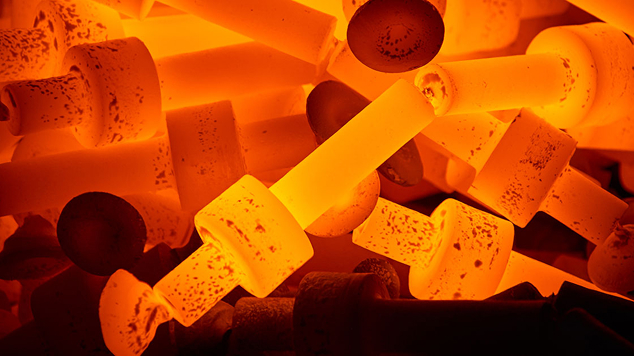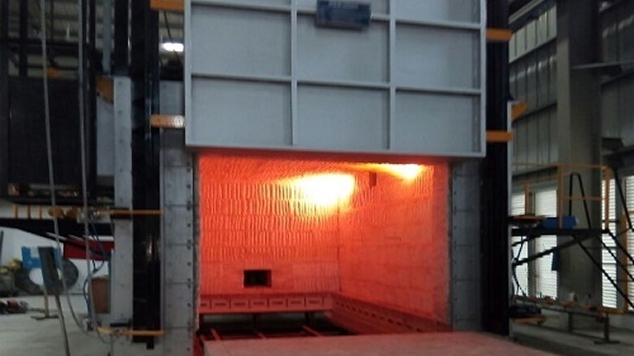Heat Treatment Process:
Heat treatment in casting involves controlled heating and cooling cycles to modify the micro-structure and properties of metal castings, enhancing their mechanical properties, machinability, and resistance to stress.
Why Heat Treat Castings?
- Improved Mechanical Properties:
Heat treatment can increase hardness, strength, ductility, and toughness of castings. - Stress Relief:
It can reduce internal stresses that can develop during the casting process, preventing cracking or warping. - Enhanced Machinability:
Heat treatment can improve the ease with which castings can be machined. - Improved Corrosion Resistance:
Certain heat treatments can enhance the resistance of castings to corrosion. - Microstructure Control:
Certain heat treatments can enhance the resistance of castings to corrosion.
Common Heat Treatment Processes:
- Annealing:
This process involves heating the casting to a specific temperature, holding it there for a period, and then cooling it slowly. Annealing improves ductility and reduces hardness, making the casting more workable. - Normalizing:
Similar to annealing, but the cooling process is faster, typically in air. Normalizing enhances strength and hardness compared to annealing. - Quenching:
This involves rapidly cooling the heated casting, typically in water or oil. Quenching can increase hardness and strength but can also lead to brittleness if not followed by tempering. - Tempering:
This process follows quenching and involves reheating the casting to a lower temperature. Tempering reduces brittleness and improves toughness. - Solution Treatment:
This heat treatment process is used for certain aluminum alloys to dissolve alloying elements into a solid solution, which is then followed by quenching and aging. - Age Hardening (Precipitation Hardening):
This process involves quenching a solution-treated casting and then heating it to a lower temperature, causing precipitates to form and harden the material. - Case Hardening:
This process involves hardening only the surface layer of a metal, increasing its wear resistance and hardness. - Nitriding:
This process involves diffusing nitrogen into the surface of a metal, creating a hard, wear-resistant layer. - Carburizing:
This process involves increasing the carbon content of the surface layer of steel, leading to a harder surface.

